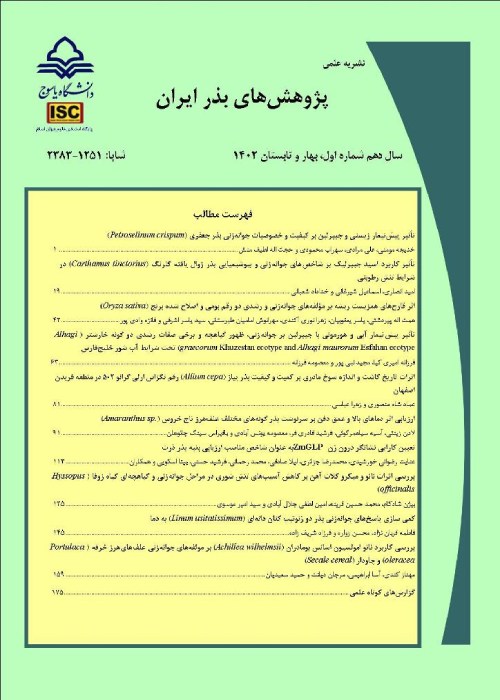Effect of root symbiosis fungi on germination and growth components of two traditional and bred rice (Oryza sativa) cultivars
Seed germination and emergence are the most sensitive stages of growth and development of rice plants. In this regard, the use of growth-promoting fungi in the form of seed biological pretreatment (bio-priming) for germination and optimal growth of seedlings can be feasible. Therefore, this study aimed to investigate the effect of isolated root symbiotic fungi on the improvement of germination and growth components of two traditional and bred rice (Oryza sativa L.) cultivars.
This experiment was done as a factorial-based completely randomized design with three replicates at Sari Agricultural Sciences and Natural Resources University in the summer of 2021. Experimental treatments included 22 isolates of root symbiotic fungi (isolated and identified from previous experiments) and control (without inoculation) and two native (Hashemi) and bred (Roshan) rice cultivars. After the end of the germination period, the number of normal seedlings was counted and five normal seedlings were randomly selected to measure the length of the root, stem, and seedling as well as the fresh and dry weight of the root, stem, and seedling.
Based on the results of cluster analysis the fungi were divided into four and three groups in Roshan and Hashemi cultivars, respectively. In both cultivars, group I was selected as the best group. In this group, the highest positive effect on vegetative traits varied from 5 to 59% compared to the control in fungal treatments was related to Bjerkandera adusta (ST1), Trichoderma atroviride (SF1), Monosporascus cannonballus (B3) and Trichoderma atroviride (SN1) in Roshan cultivar and Bjerkand adusta (ST1) in Hashemi cultivar. The best fungal treatments in germination traits of Roshan and Hashemi cultivars were Chaetomium globosum (SE2) and Bjerkandera adusta (ST1), respectively.
Overall, the results indicated the positive effect of most symbiotic fungi on the growth and germination characteristics of rice in both Roshan and Hashemi cultivars. These results show that symbiotic fungi use different mechanisms to increase growth and improve germination indicators in plants.
Highlights:
1- Growth-promoting fungi in the form of seed biological pretreatment were used (bio-priming) for optimal growth and germination and of rice seedlings.
2- The effect of native fungi isolated was investigated for the first time in two native (Hashemi) and bred (Roshan) rice cultivars.
- حق عضویت دریافتی صرف حمایت از نشریات عضو و نگهداری، تکمیل و توسعه مگیران میشود.
- پرداخت حق اشتراک و دانلود مقالات اجازه بازنشر آن در سایر رسانههای چاپی و دیجیتال را به کاربر نمیدهد.


